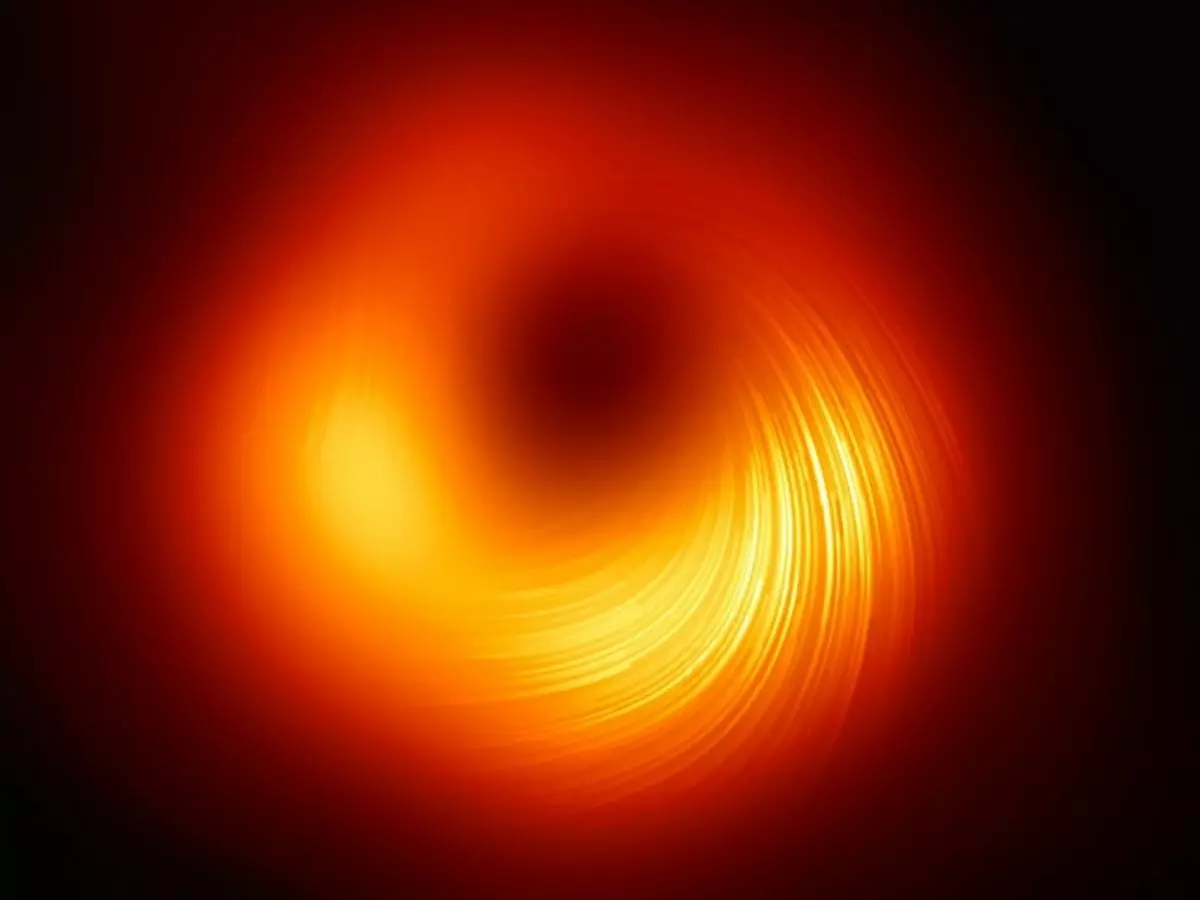First-Ever Polarized Image Of Black Hole Shows It Even Clearer Than Before
Sitting at roughly 55 million light-years from Earth, the supermassive black hole that sits at the centre of galaxy Messier 87 was witnessed in a different avatar with the help of the Event Horizon Telescope (EHT).

Two years ago when the world witnessed the image of a black hole in all its glory, it was nothing short of breathtaking -- the rather blurry rings of red and yellow that could devour planets without a hiccup.
 EHT
EHT
And now, researchers have captured this black hole in polarised light that shows the magnetic field and its interactions for the first time in space history.
Sitting at roughly 55 million light-years from Earth, the supermassive black hole that sits at the centre of galaxy Messier 87 was witnessed in a different avatar with the help of the Event Horizon Telescope (EHT).
An international team of astronomers (studies published in Astrophysical Journal Letters) measured the polarisation and were able to discover polarizations at the edge of the black hole -- something that was never seen before. Ever since its first discovery, researchers have dug deeper into the data collection that helped make its initial discovery possible.
The initial discovery just revealed a blurry visible light and its intensity, but this time, researchers looked at the polarization of that light. This allowed astronomers to map the magnetic field lines that are on the inner edge of the black hole.
Researchers explain in the study, ¡°Light becomes polarised when it goes through certain filters, like the lenses of polarised sunglasses, or when it is emitted in hot regions of space where magnetic fields are present. In the same way that polarized sunglasses help us see better by reducing reflections and glare from bright surfaces, astronomers can sharpen their view of the region around the black hole by looking at how the light originating from it is polarised. Specifically, polarisation allows astronomers to map the magnetic field lines present at the inner edge of the black hole.¡±
 EHT
EHT
Polarisation image showcases the black hole in a different avatar. It clearly shows the black hole¡¯s outer region and how the matter flows in and rejects out. With this discovery, astronomers are trying to better understand why and how a black hole consumes matter in its orbit. They are also trying to figure out how it shoots out massive jet particles into outer space.
Monika Mo?cibrodzka, coordinator of the EHT Polarimetry Working Group and Assistant Professor at Radboud University in the Netherlands added in a statement, ¡°We are now seeing the next crucial piece of evidence to understand how magnetic fields behave around black holes, and how activity in this very compact region of space can drive powerful jets that extend far beyond the galaxy.¡±
